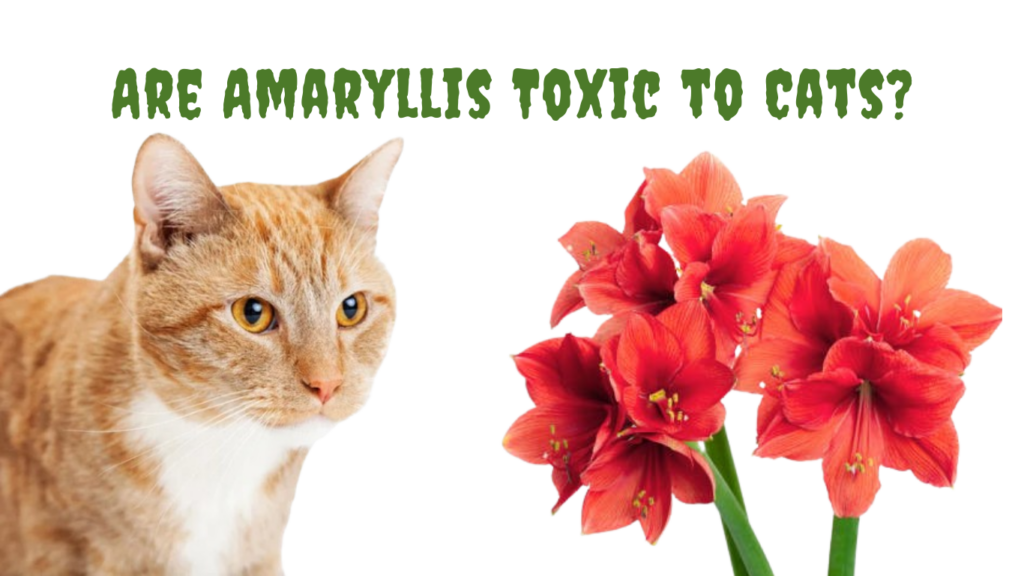Amaryllis flowers are a popular choice for holiday decorations and indoor gardening. Known for their stunning, trumpet-shaped blooms in vibrant colors, these plants can add a touch of beauty to any home. However, if you’re a cat owner, you may be wondering: Are Amaryllis toxic to cats?
The answer is yes. Amaryllis plants are considered toxic to cats, and it’s important to take precautions if you have a feline friend at home. Let’s explore why amaryllis is dangerous to cats, the symptoms of poisoning, and what to do if your cat is exposed to this plant.
Why Are Amaryllis Toxic to Cats?
Amaryllis contains a compound called lycorine, which is toxic to both cats and dogs. This alkaloid is found in all parts of the plant, including the bulb, stem, and flowers. When ingested, lycorine can cause a variety of symptoms in cats, ranging from mild irritation to more severe reactions.
Symptoms of Amaryllis Poisoning in Cats
If your cat has ingested any part of the amaryllis plant, watch for the following signs of poisoning:
- Vomiting: Cats may vomit shortly after consuming the plant, as their bodies try to expel the toxic substance.
- Drooling: Excessive drooling is a common response to the irritation caused by lycorine.
- Diarrhea: Ingesting amaryllis can upset your cat’s digestive system, leading to diarrhea.
- Abdominal Pain: Cats may show signs of discomfort, such as crouching, whining, or reluctance to move.
- Lethargy: A cat that has ingested amaryllis may appear unusually tired, weak, or lethargic.
- Loss of Appetite: Toxic reactions often cause cats to lose interest in food and water.
In severe cases, more serious symptoms such as tremors, low blood pressure, and respiratory distress may occur. If you notice any of these symptoms after your cat has been in contact with an amaryllis plant, it’s essential to seek veterinary care immediately.

What to Do If Your Cat Eats Amaryllis
If you suspect your cat has eaten any part of an amaryllis, it’s important to take action quickly. Here’s what you should do:
- Remove the Plant: If the plant is still within reach, remove it immediately to prevent further exposure.
- Contact Your Veterinarian: Call your vet or an emergency pet poison hotline as soon as possible. They may ask you to bring your cat in for an evaluation or provide advice on how to manage the situation at home.
- Monitor Your Cat: Keep a close eye on your cat’s behavior. If they start showing signs of distress, such as vomiting, excessive drooling, or lethargy, get them to the vet right away.
- Induce Vomiting (Only If Recommended): In some cases, your vet may recommend inducing vomiting to help expel the toxin. Do NOT attempt this on your own without veterinary guidance, as improper methods can be harmful.
Preventing Amaryllis Poisoning in Cats
To protect your feline friends from amaryllis poisoning, consider these preventative measures:
- Keep Plants Out of Reach: Place amaryllis plants in areas where your cat can’t access them, such as on high shelves or in rooms your cat doesn’t frequent.
- Opt for Cat-Safe Plant: There are many beautiful plants that are safe for cats, such as catnip, spider plants, and African violets. Choose these alternatives if you’re worried about your cat’s safety.
- Educate Your Family and Friends: If you have guests or children in your home, make sure they are aware of the potential dangers of toxic plants like amaryllis.
While amaryllis flowers are a stunning addition to your home décor, they can be dangerous for your cats. If ingested, the toxins in amaryllis can lead to serious health issues. By understanding the risks and taking precautions to keep your plants out of your cat’s reach, you can enjoy the beauty of amaryllis while keeping your furry friend safe.
If you think your cat has consumed any part of an amaryllis plant, don’t hesitate to contact your veterinarian immediately. The quicker the response, the better the chance of recovery.
Stay safe, and happy decorating!












